Tribological Characterization of Micro Ball Bearings with and without Solid-State Lubrication
Abstract
1. Introduction
2. Device Design
2.1. Proposed Device
2.2. Fabrication
2.3. Assembly
- The preparation of necessary equipment. Needles and bigger elements are cleaned in the ultrasonic cleaner by first using acetone/IPA; afterwards, deionized water is used and they are dried. This prevents adhesion due to viscosity and contamination with organic material.
- The lower disc is picked up and placed on the leveled surface.
- The cage is picked up and placed on top of the lower disc.
- Holes are identified using the microscope and cameras. Balls are picked up and placed inside of the ball housings.
- The upper disc is placed on top of the setup.
3. Test Setup
4. Results and Discussion
4.1. Normal Load Impact
4.2. Impact of Cage Race Clearance
4.3. Cage Coating Impact
4.4. Prolonged Operation Impact
4.5. Comparison with Literature
5. Conclusions
Author Contributions
Funding
Informed Consent Statement
Data Availability Statement
Acknowledgments
Conflicts of Interest
References
- Ceyssens, F.; Sadeghpour, S.; Fujita, H.; Puers, R. Actuators: Accomplishments, opportunities and challenges. Sens. Actuators A Phys. 2019, 295, 604–611. [Google Scholar] [CrossRef]
- Waits, C.M.; McCarthy, M.; Ghodssi, R. A Microfabricated Spiral-Groove Turbopump Supported on Microball Bearings. J. Microelectromech. Syst. 2010, 19, 99–109. [Google Scholar] [CrossRef][Green Version]
- Yang, Z.; Wang, J.; Zhang, J. A high-performance micro electret power generator based on microball bearings. J. Micromech. Microeng. 2011, 21, 065001. [Google Scholar] [CrossRef]
- McCarthy, M.; Waits, C.M.; Beyaz, M.I.; Ghodssi, R. A Rotary Microactuator Supported on Encapsulated Microball Bearings using an Electro-Pneumatic Thrust Balance. In Proceedings of the 2009 IEEE 22nd International Conference on Micro Electro Mechanical Systems, Sorrento, Italy, 25–29 January 2009. [Google Scholar] [CrossRef]
- Ghodssi, R.; Hanrahan, B.; Beyaz, M. Microball bearing technology for MEMS devices and integrated microsystems. In Proceedings of the 2011 16th International Solid-State Sensors, Actuators and Microsystems Conference, Beijing, China, 5–9 June 2011. [Google Scholar] [CrossRef]
- Ku, I.; Reddyhoff, T.; Holmes, A.; Spikes, H. Wear of silicon surfaces in MEMS. Wear 2011, 271, 1050–1058. [Google Scholar] [CrossRef]
- Berman, D.; Krim, J. Surface science, MEMS and NEMS: Progress and opportunities for surface science research performed on, or by, microdevices. Prog. Surf. Sci. 2013, 88, 171–211. [Google Scholar] [CrossRef]
- Liang, H.; Bu, Y.; Zhang, J.; Cao, Z.; Liang, A. Graphene Oxide Film as Solid Lubricant. ACS Appl. Mater. Interfaces 2013, 5, 6369–6375. [Google Scholar] [CrossRef]
- Schewe, M.; Wilbuer, H.; Menzel, A. Simulation of wear and effective friction properties of microstructured surfaces. Wear 2021, 464–465, 203491. [Google Scholar] [CrossRef]
- Michałowski, M. Simulation model for frictional contact of two elastic surfaces in micro/nanoscale and its validation. Nanotechnol. Rev. 2018, 7, 355–363. [Google Scholar] [CrossRef]
- Scharf, T.W.; Prasad, S.V. Solid lubricants: A review. J. Mater. Sci. 2012, 48, 511–531. [Google Scholar] [CrossRef]
- Lin, T.W.; Modafe, A.; Shapiro, B.; Ghodssi, R. Characterization of Dynamic Friction in MEMS-Based Microball Bearings. IEEE Trans. Instrum. Meas. 2004, 53, 839–846. [Google Scholar] [CrossRef]
- Sinha, S.K.; Pang, R.; Tang, X. Application of micro-ball bearing on Si for high rolling life-cycle. Tribol. Int. 2010, 43, 178–187. [Google Scholar] [CrossRef]
- Rhee, S.K. Surface energies of silicate glasses calculated from their wettability data. J. Mater. Sci. 1977, 12, 823–824. [Google Scholar] [CrossRef]
- Benjamin, P.; Weaver, C. Adhesion of metal films to glass. Proc. R. Soc. Lond. Ser. A Math. Phys. Sci. 1960, 254, 177–183. [Google Scholar] [CrossRef]
- Hanrahan, B.M.; Misra, S.; Beyaz, M.I.; Feldman, J.H.; Waits, C.M.; Ghodssi, R. An Adhesion-Dominated Rolling Friction Regime Unique to Micro-scale Ball Bearings. Tribol. Lett. 2014, 56, 215–221. [Google Scholar] [CrossRef]
- Grzywacz, H.; Milczarek, M.; Jenczyk, P.; Dera, W.; Michałowski, M.; Jarzabek, D.M. Quantitative measurement of nanofriction between PMMA thin films and various AFM probes. Measurement 2021, 168, 108267. [Google Scholar] [CrossRef]
- Burris, D.L.; Sawyer, W.G. Addressing Practical Challenges of Low Friction Coefficient Measurements. Tribol. Lett. 2009, 35, 17–23. [Google Scholar] [CrossRef]
- Gupta, P.K. Cage unbalance and wear in ball bearings. Wear 1991, 147, 93–104. [Google Scholar] [CrossRef]
- Gupta, P.K. Modeling of Instabilities Induced by Cage Clearances in Ball Bearings. Tribol. Trans. 1991, 34, 93–99. [Google Scholar] [CrossRef]
- Gupta, P.K. Modeling of Instabilities Induced by Cage Clearances in Cylindrical Roller Bearings. Tribol. Trans. 1991, 34, 1–8. [Google Scholar] [CrossRef]
- Hofmann, H.; Wickham, H.; Kafadar, K. Letter-Value Plots: Boxplots for Large Data. J. Comput. Graph. Stat. 2017, 26, 469–477. [Google Scholar] [CrossRef]
- Kruskal, W.H.; Wallis, W.A. Use of Ranks in One-Criterion Variance Analysis. J. Am. Stat. Assoc. 1952, 47, 583–621. [Google Scholar] [CrossRef]
- Wen, B.; Wang, M.; Zhang, X.; Zhai, J.; Sun, W. Experimental Investigation of Clearance Influences on Cage Motion and Wear in Ball Bearings. Appl. Sci. 2021, 11, 11848. [Google Scholar] [CrossRef]
- Oh, D.S.; Kang, K.H.; Kim, H.J.; Kim, J.K.; Won, M.S.; Kim, D.E. Tribological characteristics of micro-ball bearing with V-shaped grooves coated with ultra-thin protective layers. Tribol. Int. 2018, 119, 481–490. [Google Scholar] [CrossRef]
- Ghalichechian, N.; McCarthy, M.; Beyaz, M.I.; Ghodssi, R. Measurement and modeling of friction in linear and rotary micromotors supported on microball bearings. In Proceedings of the 2008 IEEE 21st International Conference on Micro Electro Mechanical Systems, Tucson, AZ, USA, 13–17 January 2008. [Google Scholar] [CrossRef]
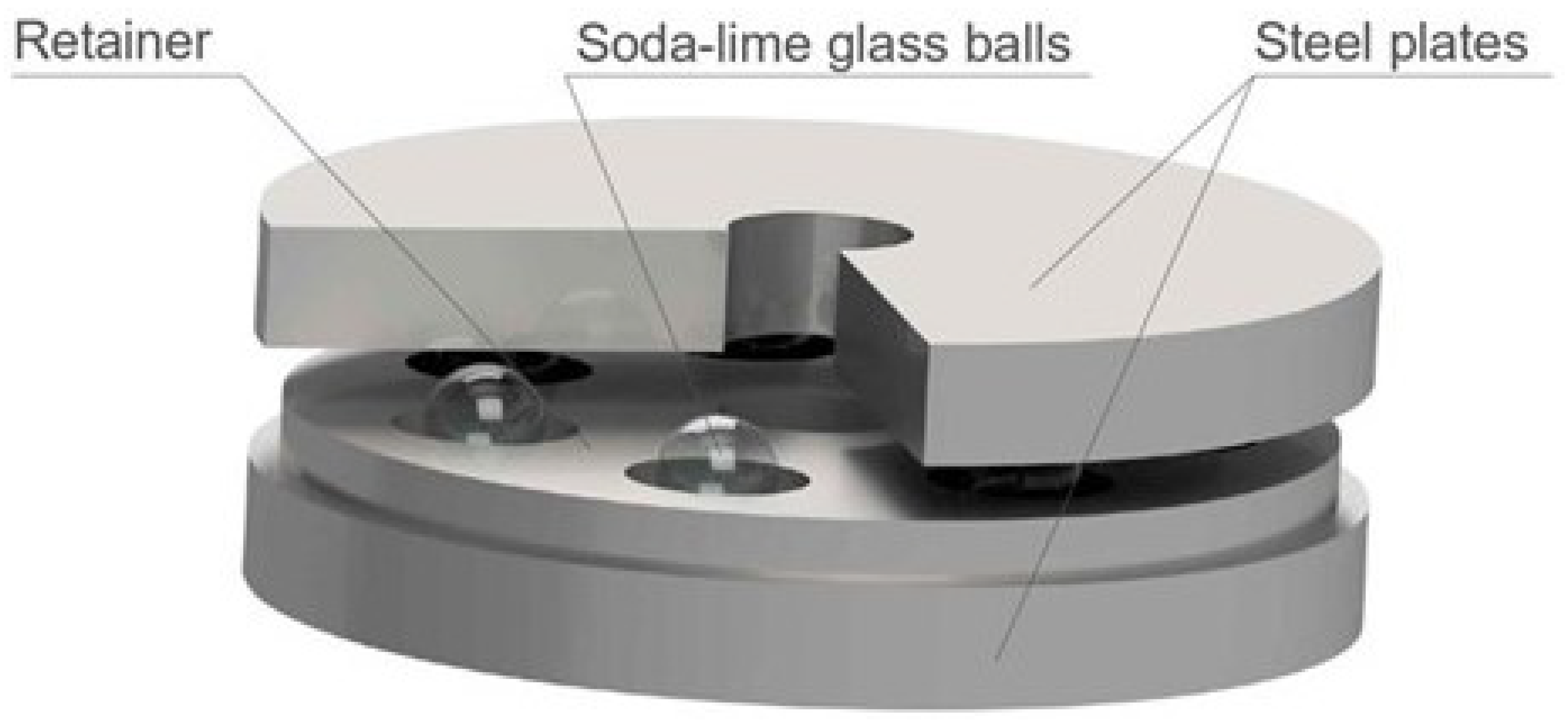
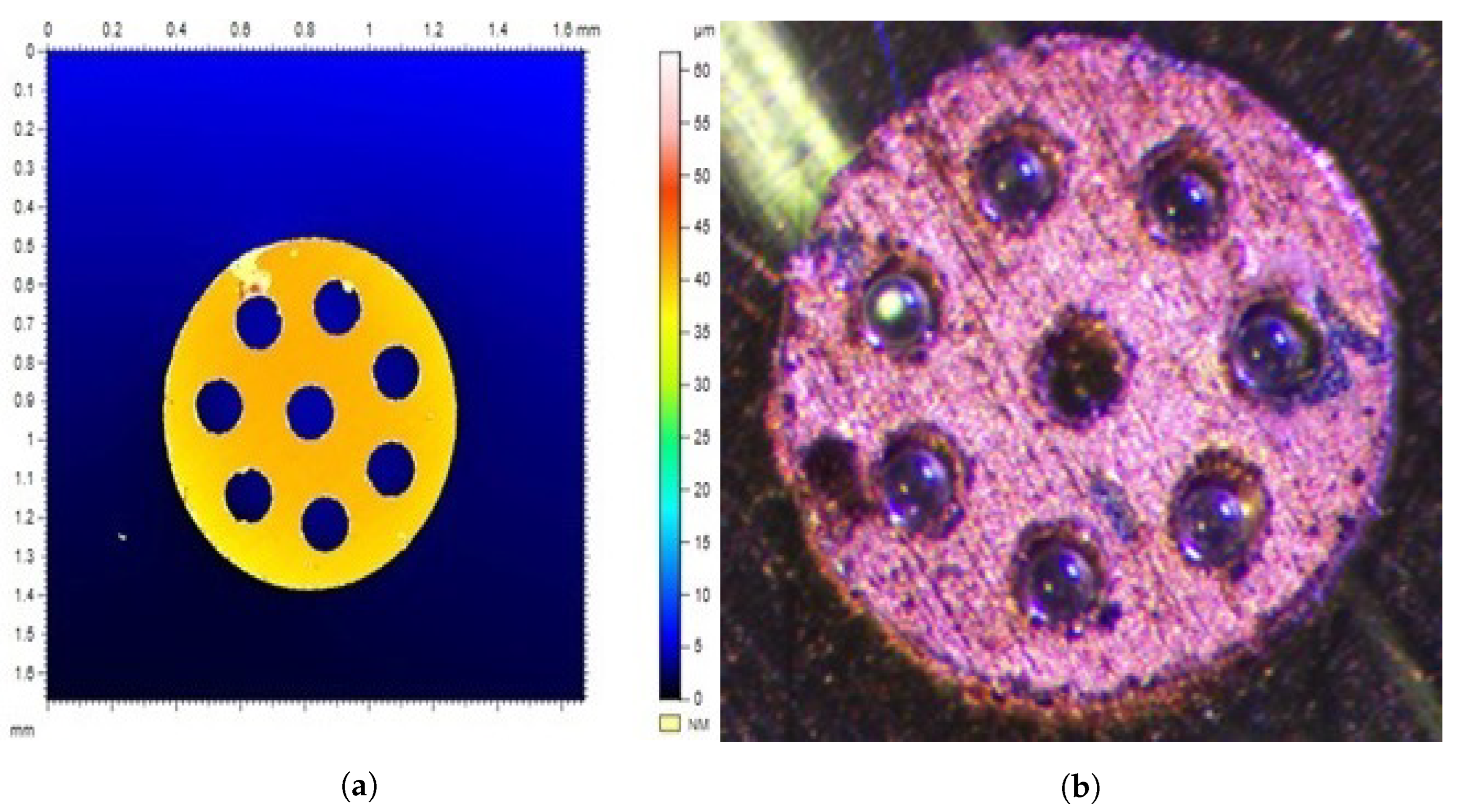
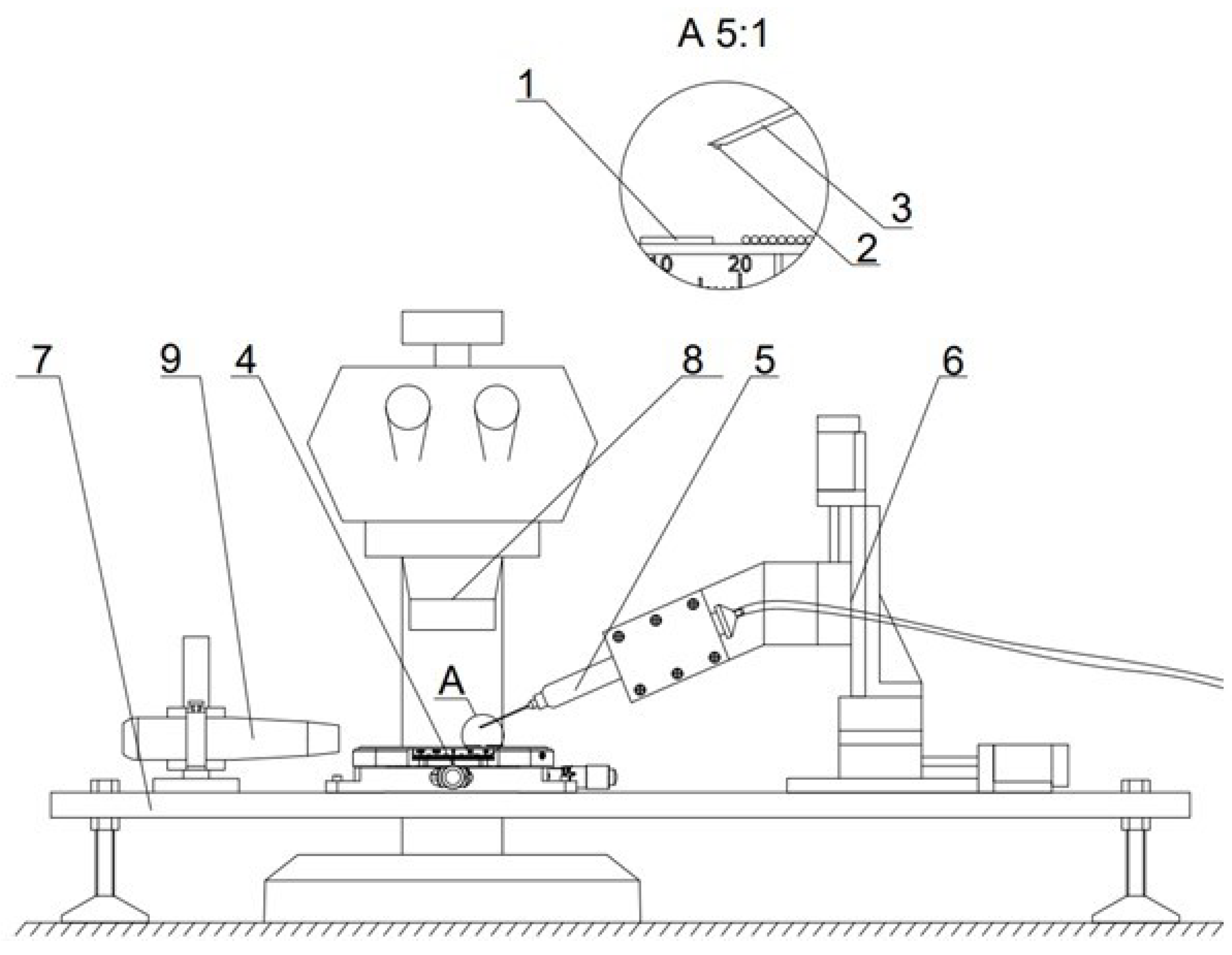
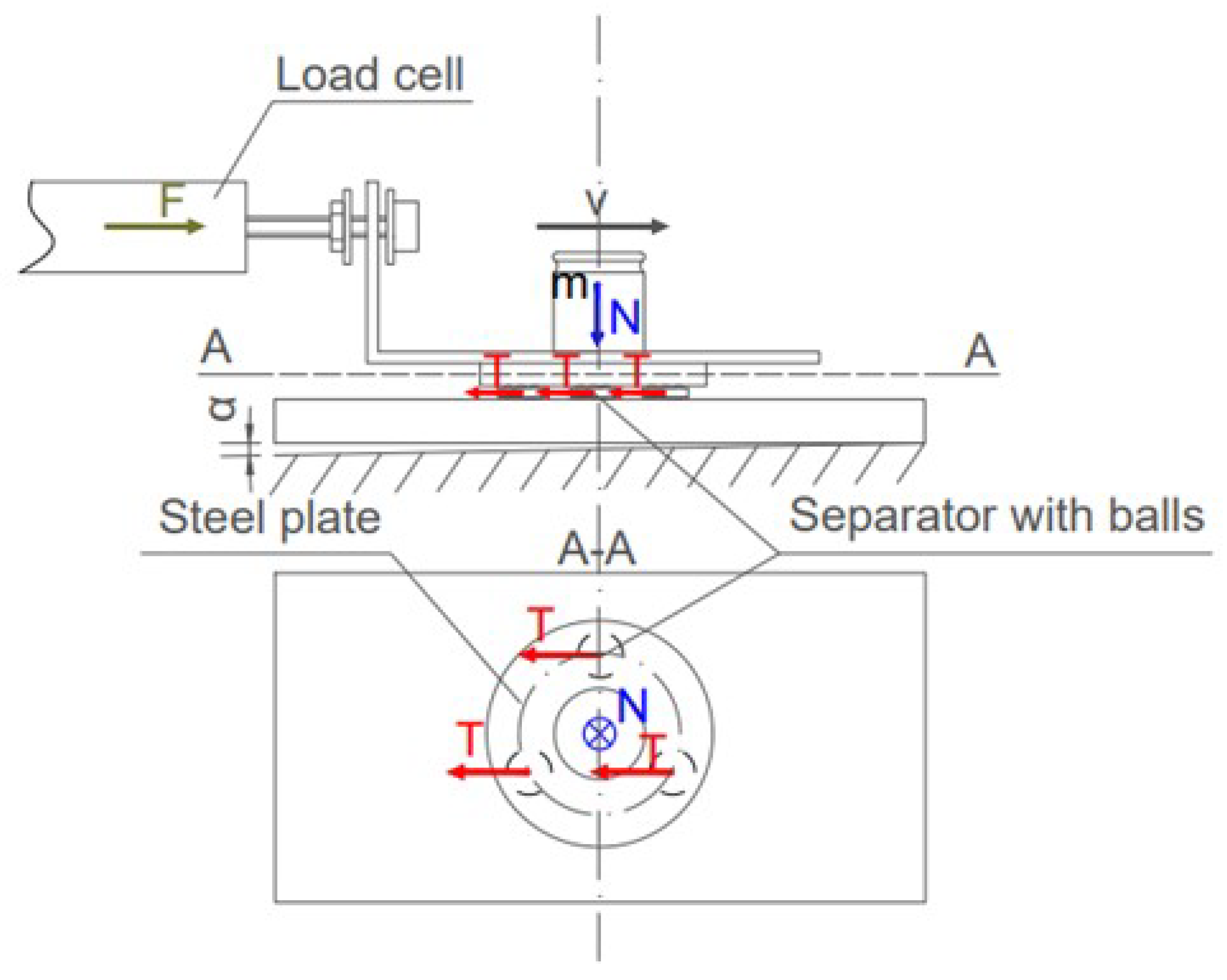


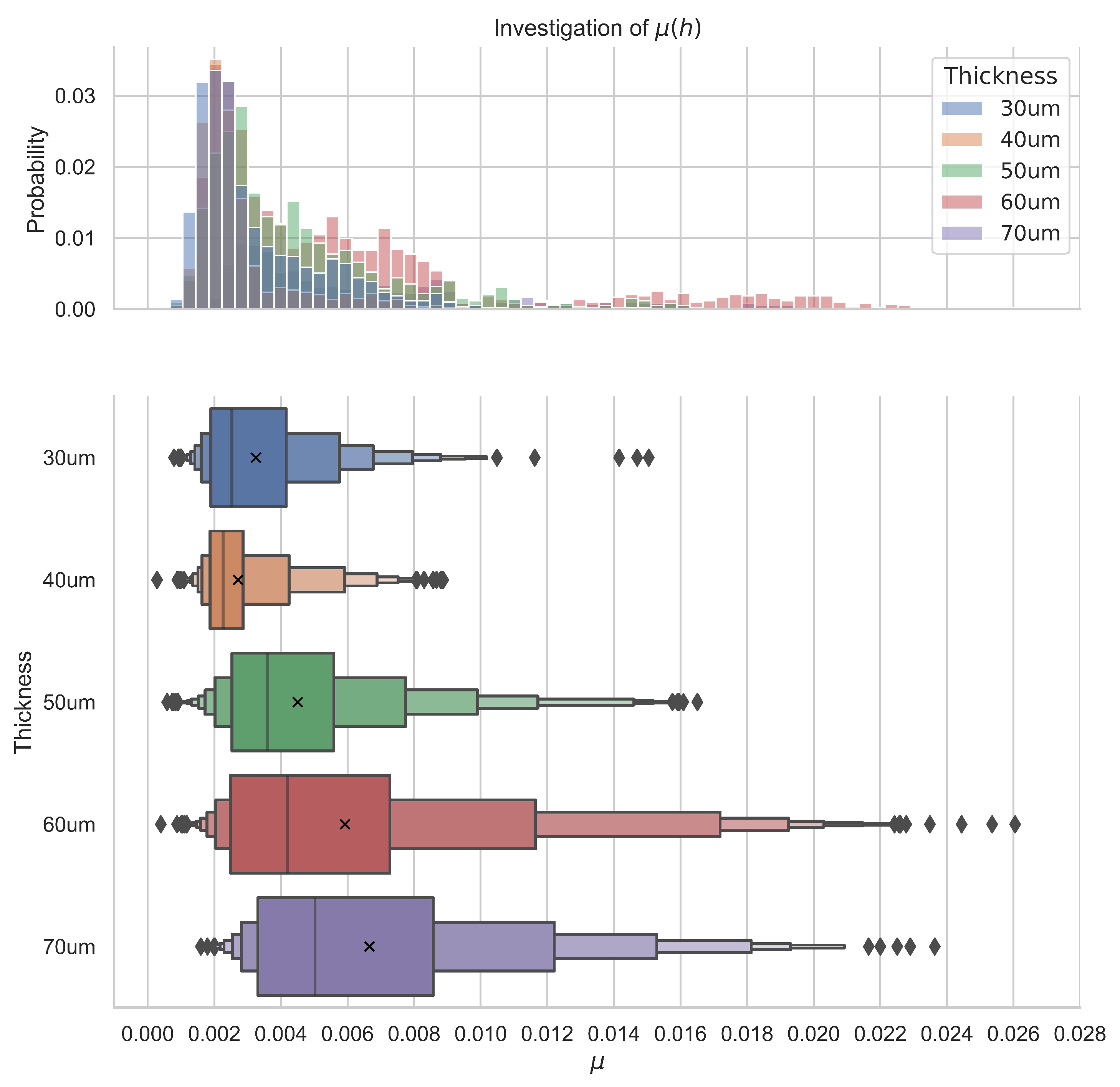
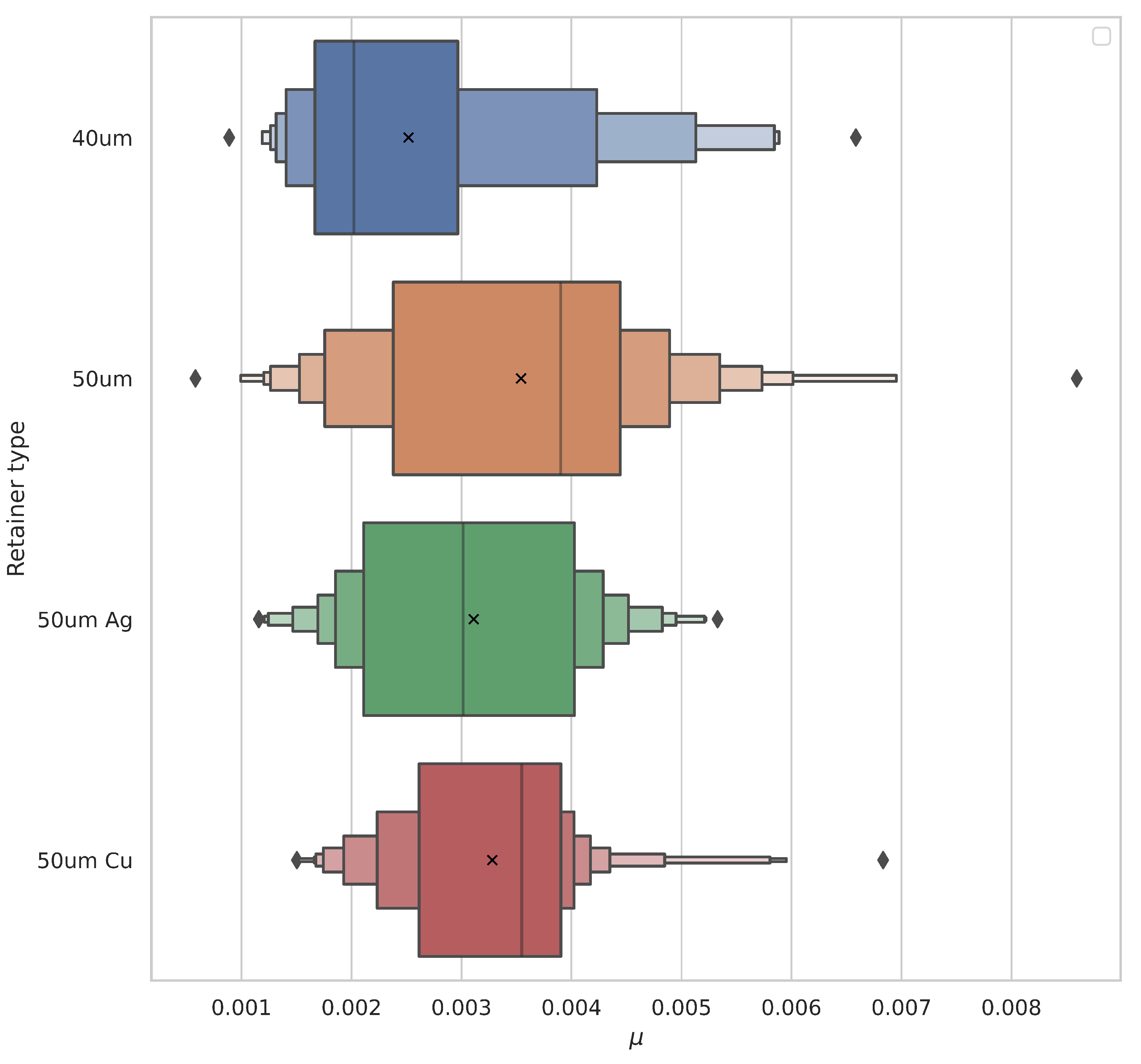
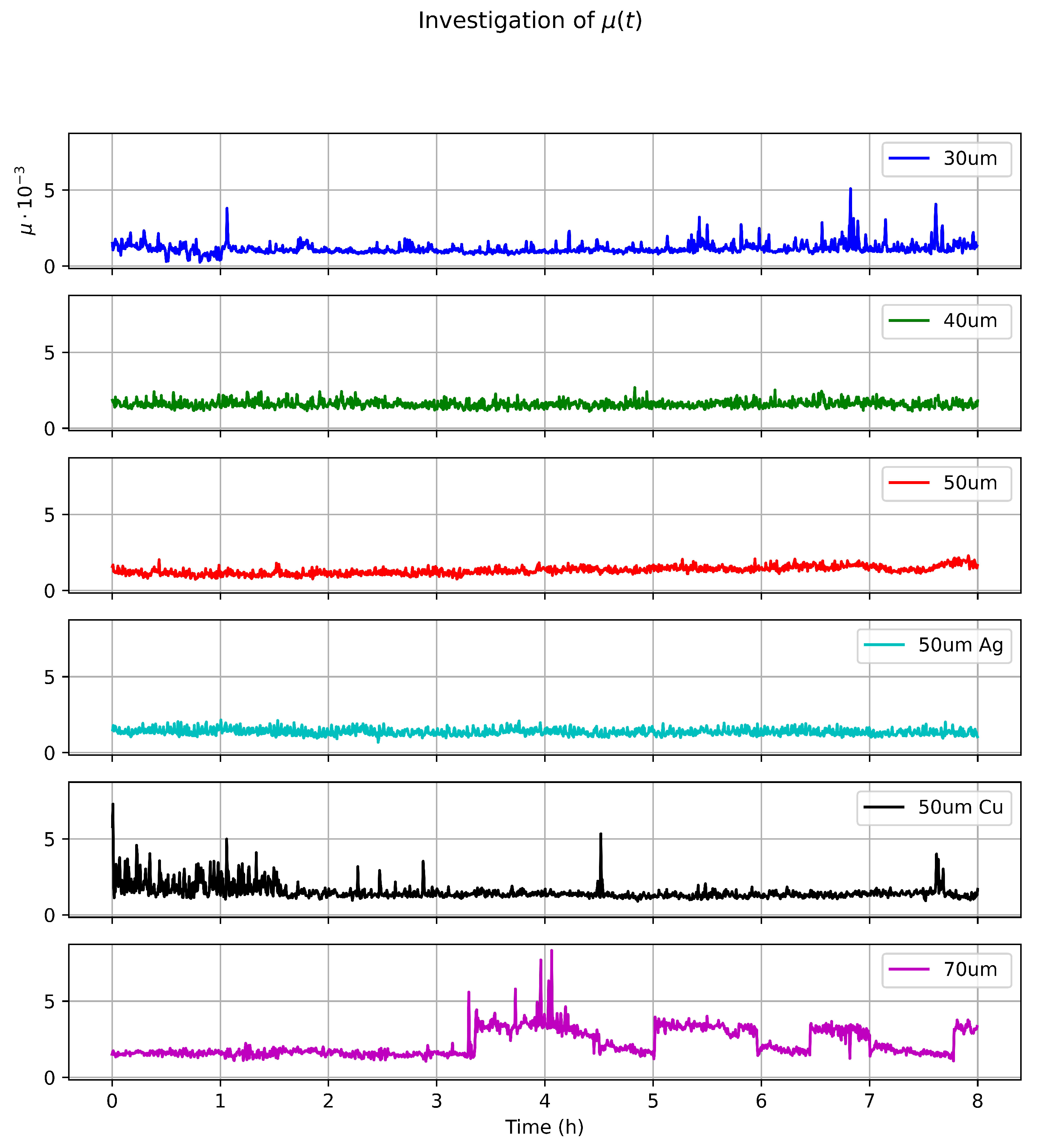
| Cage Type | (m) | (m) | (m) |
|---|---|---|---|
| 70 | 79 (4) | 798 (6) | 134 (7) |
| 60 | 66 (4) | 801 (6) | 138 (7) |
| 50 | 55 (6) | 799 (5) | 134 (6) |
| 40 | 46 (2) | 801 (7) | 136 (7) |
| 30 | 35 (2) | 801 (7) | 131 (7) |
| 40 Cu | 52 (2) | 798 (5) | 125 (6) |
| 40 Au | 55 (4) | 797 (6) | 124 (5) |
| Disc | 994 (12) | 955 (15) | - |
Disclaimer/Publisher’s Note: The statements, opinions and data contained in all publications are solely those of the individual author(s) and contributor(s) and not of MDPI and/or the editor(s). MDPI and/or the editor(s) disclaim responsibility for any injury to people or property resulting from any ideas, methods, instructions or products referred to in the content. |
© 2023 by the authors. Licensee MDPI, Basel, Switzerland. This article is an open access article distributed under the terms and conditions of the Creative Commons Attribution (CC BY) license (https://creativecommons.org/licenses/by/4.0/).
Share and Cite
Samsel, M.J.; Chańko, A.; Michałowski, M.; Fernandez-Munoz, M.; Diez-Jimenez, E. Tribological Characterization of Micro Ball Bearings with and without Solid-State Lubrication. Micromachines 2023, 14, 1775. https://doi.org/10.3390/mi14091775
Samsel MJ, Chańko A, Michałowski M, Fernandez-Munoz M, Diez-Jimenez E. Tribological Characterization of Micro Ball Bearings with and without Solid-State Lubrication. Micromachines. 2023; 14(9):1775. https://doi.org/10.3390/mi14091775
Chicago/Turabian StyleSamsel, Mateusz Jakub, Artur Chańko, Marcin Michałowski, Miguel Fernandez-Munoz, and Efren Diez-Jimenez. 2023. "Tribological Characterization of Micro Ball Bearings with and without Solid-State Lubrication" Micromachines 14, no. 9: 1775. https://doi.org/10.3390/mi14091775
APA StyleSamsel, M. J., Chańko, A., Michałowski, M., Fernandez-Munoz, M., & Diez-Jimenez, E. (2023). Tribological Characterization of Micro Ball Bearings with and without Solid-State Lubrication. Micromachines, 14(9), 1775. https://doi.org/10.3390/mi14091775






